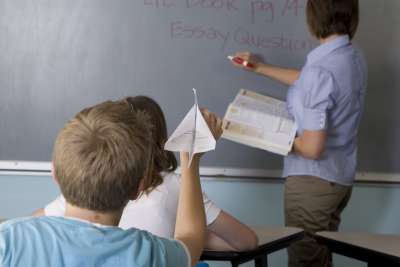Variation of the "Good Behavior Game"
A Behavior TechniqueDo you have a child in your class who is the class clown? When he or she is disruptive, do the others giggle or smile? Do you find that this child is not particularly responsive to your praise, but enjoys the attention of classmates? Have all of your efforts to dissuade the child from behaving in a disruptive fashion met with failure? If the answer to these questions is yes, the child is probably acting disruptively to gain peer attention and reinforcement.
Strategies or techniques that focus on individual behavior may not be effective for this type of child. What is needed is a strategy that shifts peer attention from the disruptive behavior to appropriate behaviors, especially in light of the power that peer attention holds for these children. The thrill of a game-like situation for appropriate behavior would be an additional motivator. The "Good Behavior Game" is such a technique.
The "Good Behavior Game" is a strategy in which teams are drawn up and behavioral standards are set. The following is a hypothetical situation in which the good behavior game might be indicated:
Linda often disrupts Mrs. Stanwick during instruction. While Mrs. Stanwick is presenting a lesson, Linda often drops her pencil, then looks over to see whether Lorenzo and Bobby are watching her. She also drops other materials on the floor while Mrs. Stanwick is speaking and giggles when that occurs. Mrs. Stanwick has noticed that Lorenzo and Bobby also think it's funny and smile at her. Additionally, Mrs. Stanwick has seen that Linda passes notes to her friends in an obvious fashion, so that Mrs. Stanwick has to attend to her. Mrs. Stanwick has tried scolding Linda, putting her in time-out, and telling others to ignore her behavior. Several times she has detained her from recess. However, these efforts have been fruitless. Mrs. Stanwick knows that if Lorenzo and Bobby did not find these behaviors cute, Linda would probably stop being disruptive.
This scenario is representative of a classroom situation in which peer reinforcement is responsible for the student's disruptive behaviors. In fact, Mrs. Stanwick's ignoring her does not deter Linda from continued disruptive behavior. Linda wants to be "called" for such behavior to gain the attention of her classmates, and she will persist until she achieves that peer attention. Mrs. Stanwick has to intervene, but she knows that she is giving Linda what she wants "center stage."















